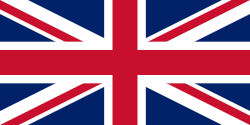
Back Geskiedenis van die Britse Ryk en Statebond Afrikaans التطور الإقليمي للإمبراطورية البريطانية Arabic Colonies y protectoraos británicos AST Калоніі і залежныя тэрыторыі Вялікабрытаніі Byelorussian Britische Kolonien und Protektorate German Anexo:Colonias y protectorados británicos Spanish Luettelo brittiläiseen imperiumiin kuuluneista alueista Finnish Perubahan wilayah Imperium Britania Raya ID Liste over tidligere britiske kolonier NB Колонии и зависимые территории Великобритании Russian


The territorial evolution of the British Empire is considered to have begun with the foundation of the English colonial empire in the late 16th century. Since then, many territories around the world have been under the control of the United Kingdom or its predecessor states. When the Kingdom of Great Britain was formed in 1707 by the union of the Kingdoms of Scotland and England, the latter country's colonial possessions passed to the new state. Similarly, when Great Britain was united with the Kingdom of Ireland in 1801 to form the United Kingdom, control over its colonial possessions passed to the latter state. Collectively, these territories are referred to as the British Empire. When much of Ireland gained independence in 1922 as the Irish Free State, the other territories of the empire remained under the control of the United Kingdom.
From 1714 to 1837, the British throne was held by a series of kings who were also the rulers of the German state of Hanover. However, this was purely a personal union, with Hanover maintaining its political independence otherwise, and so it is not usually considered to have formed part of the British Empire.
The nature of the territories (and peoples) ruled as part of the British Empire varied enormously. In legal terms the territories included those formally under the sovereignty of the British monarch (who held the additional title of Emperor/Empress of India from 1876 to 1947); various "foreign" territories controlled as protectorates; territories transferred to British administration under the authority of the League of Nations or the United Nations; and miscellaneous other territories, such as the Anglo-Egyptian Sudan, a condominium with Egypt. No uniform system of government was applied to any of these.
Several countries (dominions) within the British Empire gained independence in stages during the earlier part of the 20th century. Much of the rest of the empire was dismantled in the twenty years following the end of the Second World War, starting with the independence of India and Pakistan in 1947, and continued until the handover of Hong Kong to the People's Republic of China in 1997. There remain, however, fourteen territories around the world known as the British Overseas Territories which remain under the jurisdiction and sovereignty of the United Kingdom.
Many of the former territories of the British Empire are members of the Commonwealth of Nations. Fourteen of these (known, with the United Kingdom, as the 15 Commonwealth realms) retain the British monarch (currently Charles III) as head of state. The British monarch is also Head of the Commonwealth, but this is a purely symbolic and personal title; members of the Commonwealth (including the Commonwealth realms) are fully sovereign states.
At its territorial peak in 1920, the British Empire controlled a total area of over 35,500,000 km2 (13,700,000 sq mi) or more than 26% of the Earth's land (excluding Antarctica), the largest empire in the world.[1] At this point, the empire's population was over 449 million.[2] The United Kingdom had about 120 colonies throughout its history, the most colonies in the world; the French colonial empire came second with about 80 colonies.[3]
- ^ "Western colonialism - European expansion since 1763". Encyclopedia Britannica. Retrieved 20 August 2021.
- ^ "The British Empire—Area and Population". Historical Atlas of the British Empire. 1925. Archived from the original on 1 December 2010.
- ^ Shillington, Kevin (2005). Encyclopedia of African history. New York: CRC Press, p. 878
© MMXXIII Rich X Search. We shall prevail. All rights reserved. Rich X Search